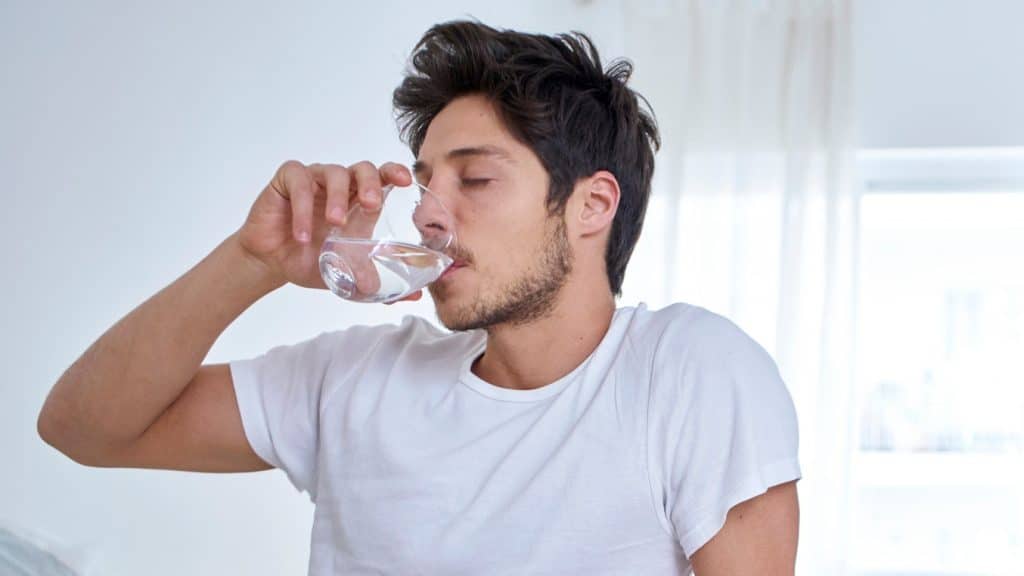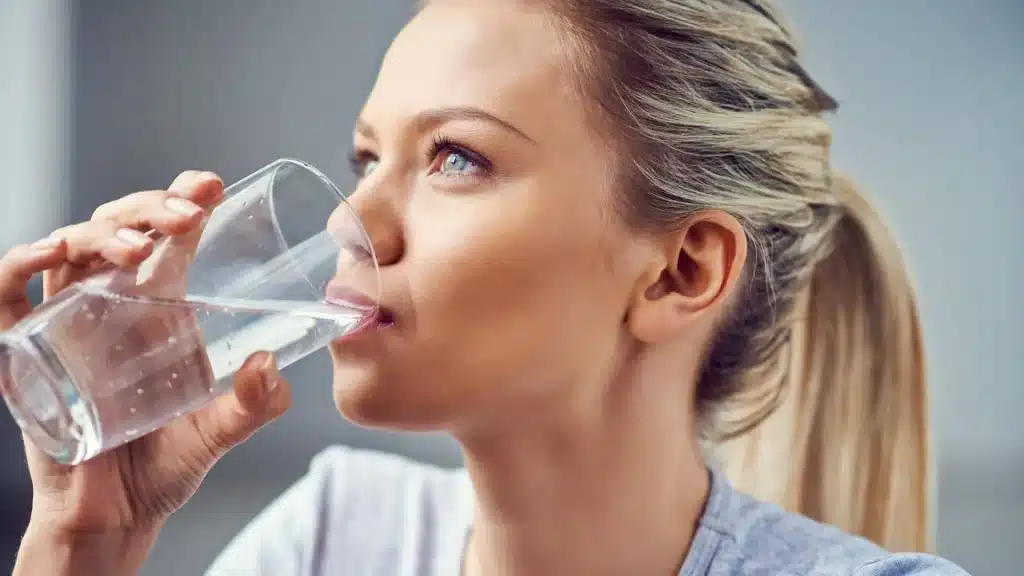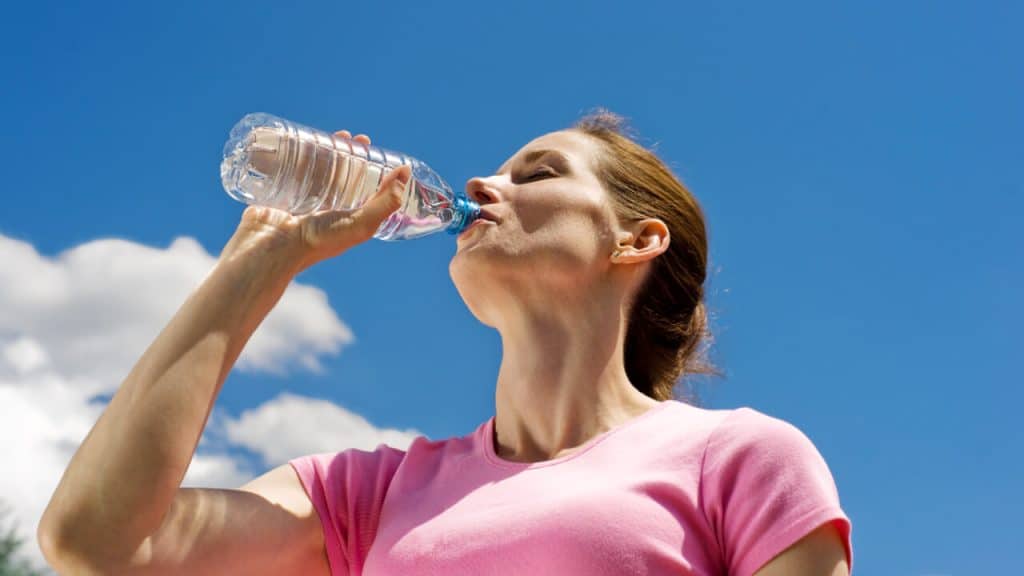In late 2023, actress Brooke Shields suffered a seizure after “flooding” her body with waterfall. Shields became dangerously low on sodium as she prepared for her show by drinking heavily. “I flooded my system and drowned,” she later explained. “And if you don’t have enough sodium in your blood, urine or body, you can have a seizure.”
Drink the right amount of water
Shields said she found herself walking outside “for no reason at all,” wondering, “Why am I here?”
“Then I enter the restaurant and go to the sommelier who had just spent an hour watching me run. At that moment everything went black. Then my hands fall to my sides and I go headfirst into the wall.”
Shields added that he was “foaming at the mouth, completely blue, and trying to swallow his tongue.”
Like Shields, many people may not be aware of the dangers of drinking excessive amounts of d, especially since hydration is often associated with health benefits. Models and celebrities often recommend drinking plenty of it to keep your skin clear and smooth. Some social media influencers have promoted drinking a liter a day to lose weight.
But the excessive consumption of water can cause hyponatremia, a potentially fatal condition of low sodium in the blood.
The body strictly regulates its content to maintain the optimal level of total body water and “osmolality”, i.e. the concentration of dissolved particles in the blood. Osmolality increases when you are dehydrated and decreases when you have too much fluid in your blood.
Osmolality is monitored by osmoreceptors that regulate the balance of sodium and water in the hypothalamus, the part of the brain that controls numerous hormones. These osmoreceptors signal the release of antidiuretic hormone (ADH), which acts on blood vessels and kidneys to control the amount of it in the body.
In healthy people, the body releases ADH when osmolality becomes high. ADH tells the kidneys to reabsorb it, which makes the urine more concentrated. The reabsorbed one dilutes the blood, bringing osmolality back to normal levels.

Low blood osmolality suppresses the release of ADH, reducing the amount of water reabsorbed by the kidneys. This dilutes the urine, which the body then eliminates to eliminate excess water.
Healthy urine should be clear and odorless. Darker, yellow urine with a noticeable odor may indicate dehydration, although medications and some foods, including asparagus, can also affect the color and odor of urine.
Adults should consume two to three liters per day, of which approximately 20% comes from food. However, we can lose up to 10 liters of water through sweating, so sweating during physical activity or in hot weather increases the amount of water we need to replace by drinking.
Some medical conditions can cause overhydration. About one in five schizophrenic patients drink water compulsively, a dangerous condition known as psychogenic polydipsia. One long-term study found that patients with psychogenic polydipsia are “74% more likely to die than a non-polydipsic patient.”
In some cases, people with anorexia nervosa may also suffer from compulsive water drinking.
For those who suffer from polydipsia, treatment focuses on medications to reduce the urge to drink, as well as increasing sodium levels. This should be done gradually to avoid causing myelinolysis, a neurological damage caused by rapid changes in sodium levels in nerve cells.

In rare but often highly publicized cases, such as that of Leah Betts in 1995, some users of the illegal drug MDMA (also known as ecstasy) have died after drinking copious amounts of water to rehydrate after dancing and sweating.
The drug increases body temperature, so users drink water to avoid overheating. Unfortunately, MDMA also triggers the unnecessary release of ADH, causing water retention. The body becomes unable to get rid of excess water, which affects electrolyte levels, causing cells to swell with water.
Symptoms of water intoxication begin with nausea, vomiting, blurred vision and dizziness. As the condition progresses, sufferers may often experience symptoms of psychosis, such as inappropriate behavior, confusion, delusions, disorientation, and hallucinations.
These symptoms are caused by hyponatremia, where sodium levels in the blood are diluted or depleted and the resulting electrolyte imbalance affects the nervous system. Water begins to move into the brain causing cerebral edema, which is swelling of the brain due to excessive fluid buildup, which is usually fatal if left untreated.
A healthy body will tell you when it needs water. If you are thirsty and your urine is dark and has a noticeable odor, then you need to drink more. If you are not thirsty and your urine is clear or a light straw color, you are already hydrating well.
Should you really drink eight cups of water a day?
The idea of drinking eight cups of water a day has been repeated for so many years that many of us use it as a goal for water intake. This so-called standard is not supported by science. Most of us will be fine if we simply drink when we are thirsty.
Fluid needs depend on a wide variety of factors. A recent study measured water loss and intake in 5,604 people aged 8 days to 96 years from 23 countries. They found that age, body size and composition, activity level, climate, geographic location (latitude and altitude), pregnancy, and socioeconomic status were all significantly associated with the amount of water people lost and absorbed.
Because needs are so individual, there is no recommended intake level that applies to everyone. Fortunately, the body usually does a good job of making sure everything is correct. “The body is equipped with hormones and receptors that tightly regulate water levels,” says Daniel Weiner, MD, a nephrologist at Tufts Medical Center and medical director of the Dialysis Clinic, Inc., Boston.

Thirst prevents most people from drinking too little. “The very young and very old may be the exception,” says Klemens Meyer, nephrologist and director of dialysis services, emeritus, at Tufts Medical Center. “Infants and young children have low body mass, making them more sensitive to even small amounts of fluid loss, and they lack the ability to clearly express their thirst. For older adults, the ability to sense thirst is reduced, as it is the volume of body fluids and the ability to effectively eliminate excess water.” These factors can increase the risk of dehydration and overhydration in older adults.
The body doesn’t store water for later use – it uses what it needs and excretes the excess through urine, so it’s difficult to drink too much. “Most people can drink much more water than they need without any negative health consequences,” says Weiner, “other than needing to go to the bathroom more frequently.” Weiner points out that some people, most often older adults and people who use certain medications (particularly thiazide diuretics for blood pressure) are at greater risk of developing a condition called water overload hyponatremia. “This is unusual in healthy people, unless they drink many liters of water,” he says.
The idea that we should all drink eight cups of water a day originated from a 1945 statement by the Food and Nutrition Board of the US National Research Council that encouraged adult water intake of 64 ounces (oz ) per day. This recommendation included water from foods, which contributes about 20% of our water intake, so we actually don’t need to drink the full 64 ounces.
Fruits and vegetables (some of which, like watermelon and cucumbers, are more than 90 percent water) are some of the biggest contributors, but soups, stews, and foods that absorb water during cooking (like beans, lentils, grains, and pasta ) contribute too.

“Thirst has served people well for thousands of years; there is no reason to change now,” says Weiner. You will need more water than usual if you are very active and sweaty, at high altitudes and in hot or humid weather (we sweat more in humid weather than dry weather because our sweat cannot evaporate to cool us down). Because older adults and young children may not be able to rely on thirst, they should be especially careful about fluid intake in these conditions.
Pregnant or breastfeeding women also need additional fluid intake. If you sweat a lot for an hour or more (or lose fluid due to vomiting or diarrhea), you may need electrolytes along with water.
Electrolyte sports drinks typically contain added sugars and dyes. Choices like milk, soy milk, coconut water and chicken broth naturally contain electrolytes to aid in rehydration.
Urine color is a possible way to assess hydration in children and young adults, but not necessarily in older adults. Light colored urine indicates hydration, very dark urine indicates dehydration.
Whenever you feel thirsty, avoid drinks with added sugars (including those sweet coffee drinks) and hydrate with healthy choices, such as any type of water, unsweetened tea and coffee, and juicy fruits and vegetables.
#drinking #lots #water #good #health
